1830

The Senate passed the Indian Removal Act, which forced the Cherokee, Creek, Seminole, Choctaw, and Chickasaw Indians, known as the Five Civilized Tribes, out of their lands east of the Mississippi River and into the west. In what came to be known as the Trail of Tears, federal troops marched the Indians into the eastern part of the future state of Oklahoma for permanent settlement.
1834
The Senate passed legislation establishing the Indian Territory in much of what is today known as Oklahoma. The Five Civilized Tribes are now represented on the state flag of Oklahoma.
1850
Senator Henry Clay’s Compromise of 1850 established the northern border of Texas, which would become the southern border of Oklahoma.
1854
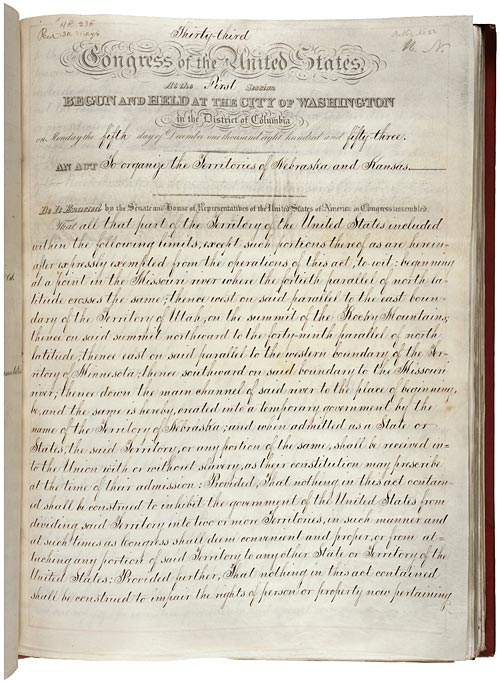
The Senate passed the Kansas-Nebraska Act. As adopted on May 30, the law set the southern border of Kansas and thus, the northern border of Oklahoma at the 37th parallel.
1887
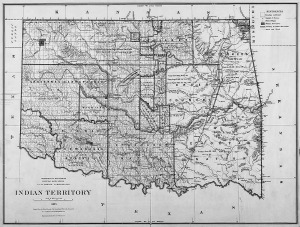
Congress passed the Dawes Act, dividing Indian lands, including most of Oklahoma, into individual allotments for sale to tribal members. This division forced the government to recognize Native Americans as individuals separate from the tribal unit, thus reshaping the government’s Indian policy.
1890
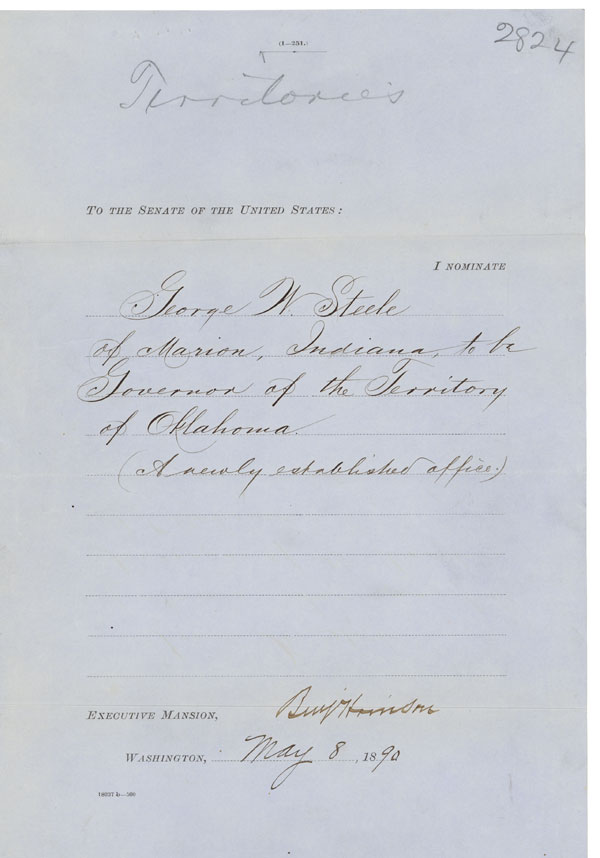
The Oklahoma Territorial Act, passed by the Senate on April 23, took effect, covering part of the area of the present state. The law provided for a territorial government, a legislature elected by the people, and an executive appointment by the president. Oklahoma was the last territory to be formed within the continental United States.
1898
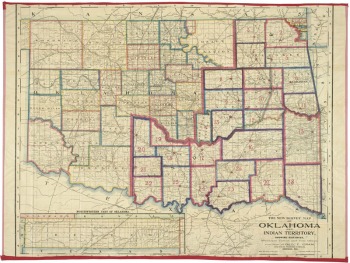
The Senate and House passed and the president signed the Curtis Act, reducing the authority of Native American tribal governments and allowing individual land allotments to be sold to whites for settlement. This law resulted in a renewed land rush by settlers to the Oklahoma Territory.
1906
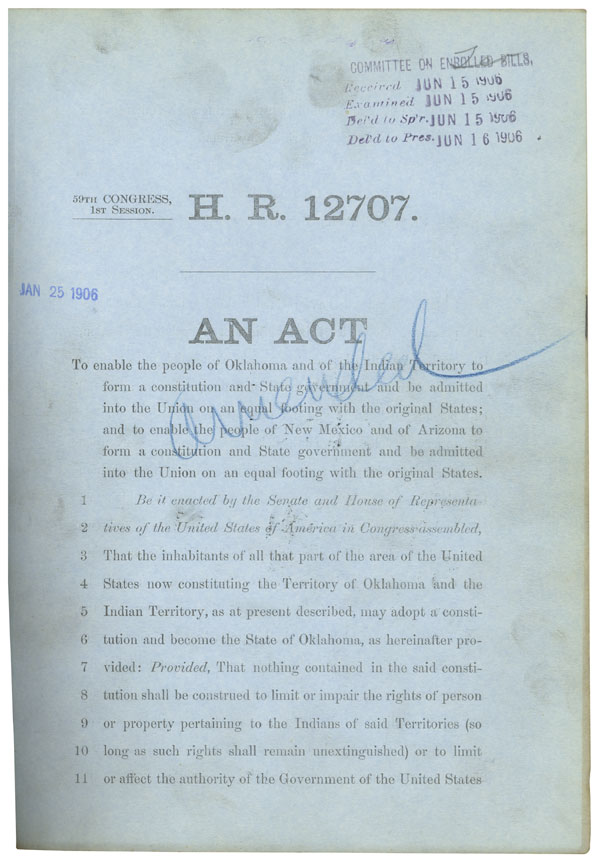
The Senate passed the Oklahoma Statehood Enabling Act, which passed both houses on June 16. It allowed the people of the Oklahoma and Indian territories to draft a state constitution and petition Congress for admission to the Union as one state.
1907

Oklahoma was admitted to the Union as the 46th state. On December 11, Oklahoma’s legislature elected the state’s first two senators: Robert L. Owen, a Democrat of Muskogee, and Thomas P. Gore, Democrat of Lawton. Gore was completely blind.
1907

Robert L. Owen was elected Democratic Conference secretary, despite the fact that he had not yet been sworn into office. He served as Democratic Conference secretary until 1911.
1907
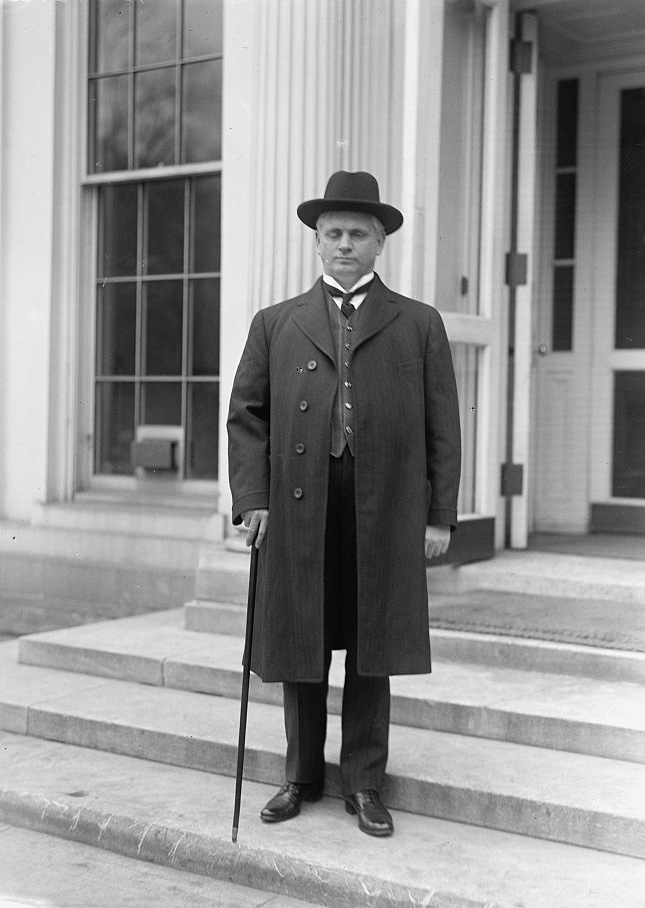
Robert L. Owen and Thomas P. Gore presented their credentials, took the oath of office, and were seated in the United States Senate. The senators then drew lots to determine their class assignments. Senator Owen drew Class 2 with a term to expire March 3, 1913. Senator Gore drew Class 3, with a term to expire March 3, 1909.
1913
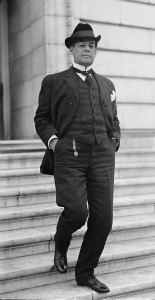
At the start of the 63rd Congress the Senate created the Senate Committee on Banking (now the Committee on Banking, Housing, and Urban Affairs). Robert L. Owen became its first chairman. In this capacity he cosponsored the Glass-Owen Bill--the landmark legislation that created the Federal Reserve Bank.
1913
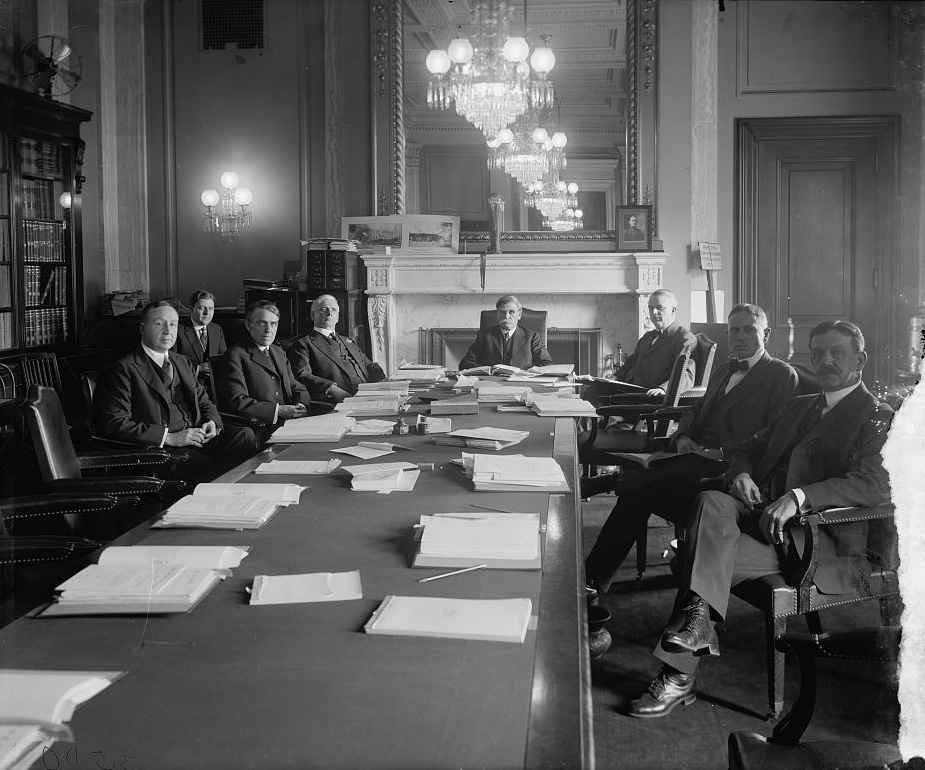
Thomas P. Gore became chairman of the Committee on Agriculture and Forestry, (today's Committee on Agriculture, Nutrition, and Forestry), serving until 1919.
1914
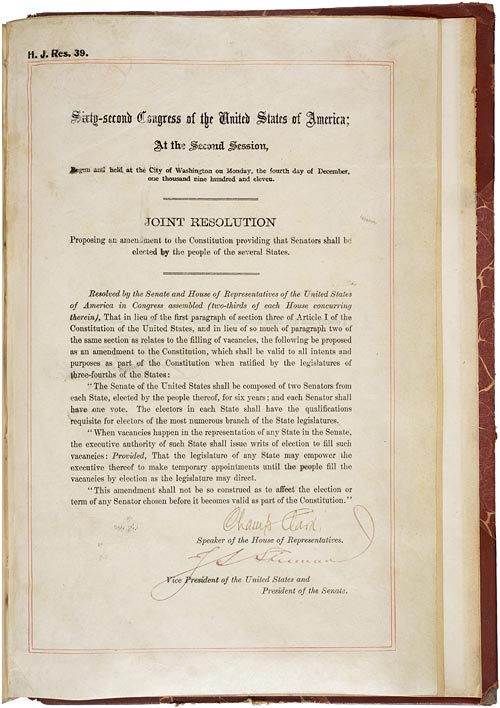
In winning re-election, Thomas P. Gore became Oklahoma’s first directly elected senator under the terms of the Seventeenth Amendment to the U.S. Constitution.
1917
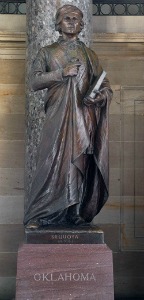
A statue of Sequoya was unveiled in the U.S. Capitol as Oklahoma's first contribution to the National Statuary Hall Collection. Sequoya was famous for his leadership in the Cherokee Indian tribe, particularly for his efforts at promoting literacy.
1935

J. Elmer Thomas of Medicine Park became chairman of the Senate Committee on Indian Affairs, serving until 1944.
1936

Joshua B. Lee of Norman was elected Democratic Conference secretary, a position he held until 1942.
1939
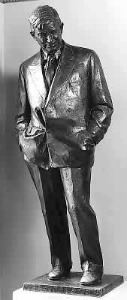
A statue of Will Rogers, renowned comedian and social critic, was unveiled in the Capitol as Oklahoma's second contribution to the National Statuary Hall Collection.
1944
J. Elmer Thomas became chairman of the Senate Committee on Agriculture and Forestry (today's Committee on Agriculture, Forestry, and Nutrition), serving until 1947, and again from 1949 to 1951.
1946
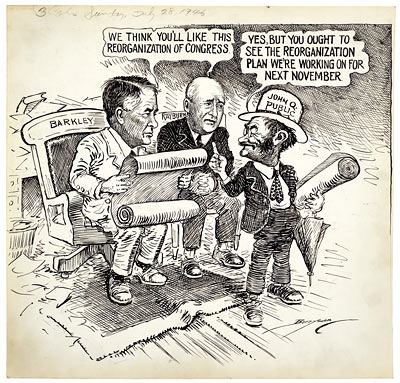
President Harry Truman signed into law the the Legislative Reorganization Act, co-sponsored by Oklahoma representative and future senator Almer Stillwell “Mike” Monroney of Oklahoma City. The act reformed the legislative process by, among other things, reducing the number of Senate committees.
1953

Senator Mike Monroney denounced the investigatory authority of Joseph McCarthy’s Permanent Subcommittee on Investigations. Monroney successfully tried to amend the Senate rules to prevent McCarthy's investigation of Central Intelligence Agency personnel.
1956
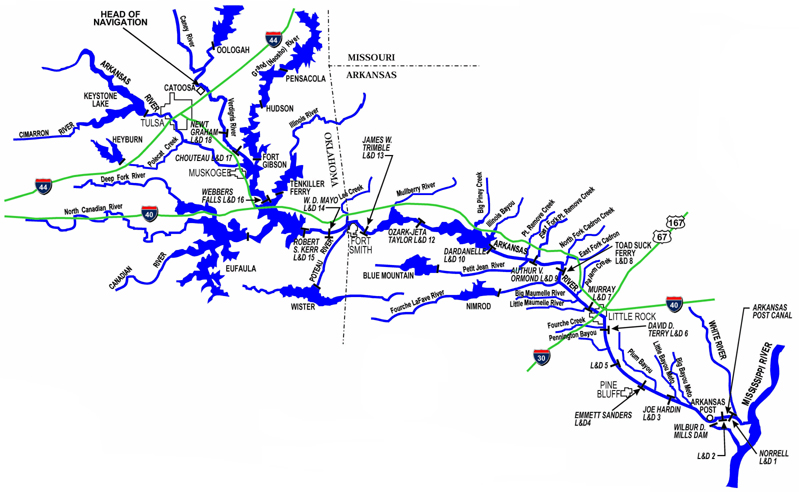
Senator Robert S. Kerr of Oklahoma City helped shepherd through Congress funding for a navigation project that eventually was named the McClellan-Kerr Arkansas River Navigation System. This created an economic boom in northeastern Oklahoma.
1958
Senator Mike Monroney sponsored the Federal Aviation Act of 1958, which created the Federal Aviation Agency.
1961

Robert Kerr became chairman of the Aeronautical and Space Sciences Committee, (today's Committee on Commerce, Science, and Transportation). This committee was crucial in providing support for the space program.
1965

Fred R. Harris of Lawton received the Golden Gavel Award for presiding over the Senate for 100 hours in a single session of Congress.
1975

After losing a bruising election fight, Edmond A. Edmondson, son of former senator J. Howard Edmondson, filed a petition with the United States Senate to prevent incumbent senator Henry L. Bellmon of Red Rock from being seated. Citing irregularities in the vote totals, he challenged the legitimacy of the electoral result. The Senate ruled on March 4, 1976, in favor of Senator Bellmon.
1987

David L. Boren of Seminole became chairman of the Senate Select Committee on Intelligence, serving until 1993.
1988

Donald L. Nickles of Ponca City was elected chairman of the National Republican Senatorial Committee, a position he held until 1991 when he took over as chairman of the Senate Republican Policy Committee He served in that position until 1996.
1995
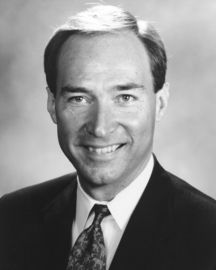
Kelly D. Johnston of Oklahoma became the 28th secretary of the Senate. Johnston served until September 30, 1996.
1996

James Inhofe received the Golden Gavel Award for presiding over the senate for 100 hours in a single session of Congress.
2003
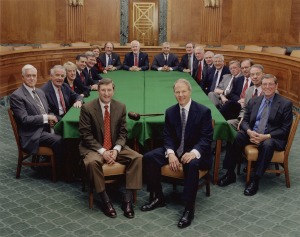
Donald L. Nickles became chairman of the Senate Committee on the Budget, serving until 2005. James Inhofe became chairman of the Senate Committee on Environment and Public Works, serving until 2007.
2004
Donald L. Nickles became Oklahoma's longest-serving senator, surpassing the record of 23 years, 10 months set by J. W. Elmer Thomas. Nickles retired on January 3, 2005, having served for 24 years.
2006

Tom Coburn of Muskogee received the Golden Gavel Award for presiding over the senate for 100 hours in a single session.
2015
James Inhofe again became chairman of the Senate Committee on Environment and Public Works, a position he held until January 5, 2017.
2016

James Lankford of Edmond received the Golden Gavel Award for presiding over the senate for 100 hours in a Congress.
2018
James Inhofe became chairman of the Senate Armed Services Committee, a position he held until 2021.
2018
James Inhofe became Oklahoma's longest-serving senator, surpassing Donald L. Nickles's record of 24 years. Senator Inhofe went on to serve a total of 28 years, 1 month, and 17 days.
2020
James Lankford became chairman of the Senate Select Committee on Ethics, a position he held until 2021.
2023

Markwayne Mullin of Westville, an enrolled member of the Cherokee Nation, became the fourth person of Native American descent to serve in the U.S. Senate.